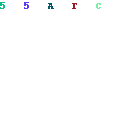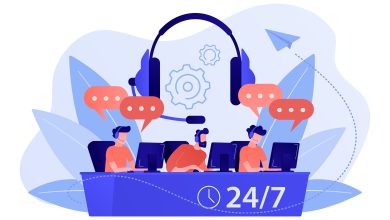Diverse Call Routing Techniques for Inbound and Outbound Call Centers

Incoming calls are routed using the skill-based routing (SBR) technique to the best agents based on their expertise, availability, and skill set. It is one of the most popular and successful methods for improving contact center operations and customer satisfaction. However, it has significant shortcomings and difficulties that must be considered and resolved to achieve the desired outcome for your contact centers. There are diverse types of outsourcing techniques available, though SBR emerged as a winner for a few obvious advantages. Offshore or onshore American contact center services are the most utilized methods for routing calls to agents.
The pros and cons of SBR, FIFO, LIA, and PA call routing strategies will be compared in this article, along with additional call routing techniques.
Different Types of Call Routing Techniques For Call Centers
What exactly is FIFO?
The simplest and most common call routing mechanism, the First Come First Out or FIFO call routing system, answers calls in the order call centers receive them. Fairness and openness are ensured for both customers and agents. It is simple to adopt and administer in any call center environment without any complexities in terms of technology and management. Whether offshore small call centers with inadequate infrastructure or a small business setting up answering services, this system is pretty easy to implement. However, long wait times, high abandonment rates, low first-call resolution (FCR), and mismatched abilities of agents are some of the drawbacks that the system possesses, and any top BPO company in the USA or other countries and offshore or American contact center services avoid this sorts of call routing.
FIFO does not consider the intricacy or urgency of the call, the agent’s availability or skill level, and the customer’s preferences or past behavior. As a result, it could lead to the following:
- decreased customer satisfaction and loyalty,
- increased agent dissatisfaction and turnover,
- increased operating expenses in any call center.
What is LIA?
The agent sitting idle for the longest receives calls according to the LIA or Longest Idle Agent call routing mechanism. It relies on the idea that unoccupied agents are more prepared and eager to answer calls than agents engaged in other calls or work. Moreover, it seeks to decrease agent inactivity, boost agent utilization, and evenly distribute the task across the total number of agents. Many offshore, onshore, and American contact center services in the past used this method, but they stopped using it.
Because it has several disadvantages, including decreased agent motivation, increased agent burnout, and worse service quality. The reason is that the customer’s demands or expectations, the agent’s performance, or the call’s importance or value are not considered by LIA. Consequently, it might result in reduced FCR, higher transfer rates, greater customer dissatisfaction, and lower agent engagement in contact center operations.
What is PA
Preferred Agent or PA is a method of call routing that routes calls to the agent that the customer has already interacted with or requested to talk to or handle their issue. It is based on the notion that consumers like to speak with the same agent familiar with their specific needs, preferences, and issues. It also anticipates that advisors are keen to interact with customers with the following characteristics:
- who has worked with them,
- trust them, and
- value their services more than new ones.
The system has some significant advantages and is useful to utilize in offshore or American contact center services.
Because it aims to increase customer satisfaction, loyalty, and retention. Also, it helps increase the agents’ confidence and contentment with their work and improve their performance and effectiveness. It also comes with several negatives, such as longer wait times, a lack of agent availability. And a greater reliance on a small number of agents, which can disrupt service delivery and consistency. Furthermore, the PA does not take into account the call’s urgency, complexity. The skills of the other agents, or the potential for cross-selling when relying on a cluster of agents.
Understanding SBR.
Skill Based Routing or SBR is a system of call routing where calls are routed to the agent who is best qualified to handle them in terms of skill, knowledge, and experience. It bases itself on the notion that both clients and call center representatives like to address inquiries that are relevant to their Skills, experience, and interests. It is one of the most widely used call routing techniques, and offshore, onshore. American contact center services are implementing this routing method for the most efficient outcome.
Customers want to speak with the most knowledgeable person available to resolve their issues quickly and efficiently. In doing so, it aims to achieve the following:
- increase FCR,
- decrease transfer rates,
- increase agent effectiveness, and
- foster customer satisfaction and loyalty.
It also has certain negatives, such as heightened complexity, technological demands, greater maintenance costs, and raised expectations. Because of this, SBR systems need a complex system. The system must be able to recognize, categorize, and rank calls according to a variety of factors, including language, product, issue, channel, etc. It also must be able to track, assess, and improve the performance and capabilities of the agents. Moreover, a dynamic workforce management system that can coach. Schedule, and train employees in line with changing client demands and skill shortages is also necessary. It also calls for trustworthy, superior customer service that will likely meet or surpass client expectations and objectives.
Final Words: How Do You Pick the Best Tactic?
There isn’t a single call routing strategy that works for all contact centers since different tactics have different benefits. Drawbacks based on the setting, objectives, and resources of the contact center. Also, inbound or outbound, offshore, onshore or near shore. Voice or non-voice support or services- different contact centers need diverse routing for seamless customer experience. Therefore, when choosing the best strategy for your offshore, onshore or American contact center services. It’s important to take into account a variety of factors, including:
- size and complexity of the contact center,
- call volume and type,
- agent diversity and skill,
- customer expectations and preferences,
- technology capability and infrastructure,
- budget and available resources.
So, a mix of tactics may be utilize for the greatest results in some situations. For example, to bring the best outcome for inbound or outbound calls, use the following techniques in the appropriate use cases:
- Use FIFO for general queries,
- Utilize PA for recurrent customers,
- Employ LIA for outbound calls and
- Use SBR for complicated or high-value interactions.
Each strategy’s effectiveness and results must be track and evaluate in order to make any necessary improvements. And a clever combination of these tactics will also help mitigate the downsides of these tactics. Also, consider AI-based intelligent routing techniques with experienced BPO or BPM service providers who can guide you best in choosing the right technique for calls or overall contact routing for your operation.



